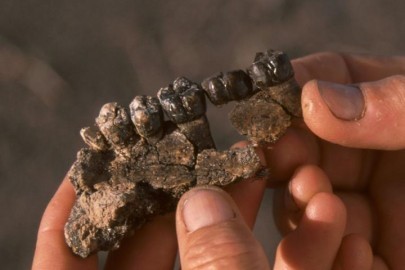According to a report in The San Diego Tribune, scientists of the University of California, San Diego, have identified a molecule made by a large number of animals, including all apes, but not modern humans. This discovery could help distinguish between hominim fossils related modern humans and those of species belonging to offshoots of the human family tree. The disappearance of a substance called Neu5Gc, may have even created a fertility barrier between the ancestors of modern humans and other hominins, scientists say. The scientists first tested a 50,000-year-old cave bear fossil, and found an unusual form of chondroitin sulfate, a surviving remnant of Neu5Gc, and then a four-million-year-old bovine fossil, which also contained the molecule. Since human ancestors are thought to have lost the ability to make Neu5Gc between two and three million years ago, it appears that the technique could help researchers more accurately identify the period of when the loss occurred.
source: archaeology.org
Ask me anything
Explore related questions





